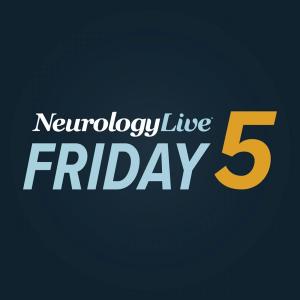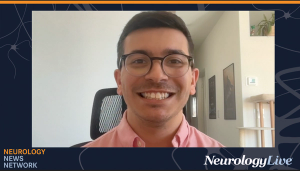|Articles|July 26, 2023
NeuroVoices: Alessio Travaglia, PhD, on Utilizing Available Alzheimer Biomarkers Properly
Author(s)Marco Meglio
The director at the Foundation for the National Institutes of Health provided perspective on the effective ways to utilize currently available biomarkers for Alzheimer disease research.
Advertisement
The Foundation for the National Institutes of Health (FNIH) has been geared toward enhancing target discovery for Alzheimer disease (AD) through the Accelerating Medicines Partnership (AMP) Program and the Biomarker Consortium. This trove of data has served as a vital resources for researchers worldwide, providing invaluable insights into the early detection, progression, and treatment of AD.
With the recent traditional approval of lecanemab (Leqembi; Eisai), the utilization of prominent biomarkers, namely amyloid-ß and tau, in the identification of optimal candidates will be critical. At the recently concluded Alzheimer’s Association International Conference, held July 16-20, in Amsterdam, the Netherlands, several presentations covered the use of these emerging biomarkers. The FNIH hosted 2 poster sessions, 1 of which covered the comparative performance of plasma Aß assays and their relationship to amyloid PET, and the other, which highlighted the Biomarkers Consortium SV2A (synaptic vesicle glycoprotein 2A) Project.
In the first phase of the SV2A study, a team of investigators found that SV1A density does correlate to a known synaptic marker and that there was lower SV2A density in the brain samples of AD cases. Overall, these findings suggested that finding ways to reverse synaptic loss could be critical for treating AD and other similar brain disorders.
Prior to the meeting, NeurologyLive® sat down with Alessio Travaglia, PhD, director of the FNIH, to discuss the research, and the potentially critical biomarkers currently available. Travaglia provided insight on which biomarkers might make a greater impact on disease progression, the unanswered questions with how they will be used in clinic, and the need for a diverse sample of accurate biomarkers.
NeurologyLive: Are there certain therapeutic targets that will have a greater impact on Alzheimer disease progression?
Alessio Travaglia, MD, PhD: It's interesting to see how the Alzheimer space is changing, and so rapidly. If you look at the landscape 10 years ago, people just looked at cognition. The biomarker was just cognitive endpoints. Now, we’re moving toward this amyloid PET. We have all these biomarker measures: plasma amyloid-ß and tau. What’s next? There are 2 things coming along the pipe. The first one is SV2A (synaptic vesicle protein 2A). Cognitive health and synaptic plasticity, including the health of synapses, is certainly the strongest link or association with cognitive decline. As we speak, we don't really have a biomarker to measure synaptic health in the brain. The work that we're doing on SV2A is certainly going to pave the way in that space.
We are developing these biomarkers for the future to develop pet tracers that can measure synaptic health through SV2A. This is going to happen in the next, say, 3 to 5 years. Then, patients are going to have access to these tools. The next big thing is going to be digital biomarkers, and the use of digital technologies, as well as all the work that currently is happening with artificial intelligence. That’s certainly going to change the landscape.
With the rollout of new therapies, how can the clinical community effectively use biomarkers to their advantage?
That’s a good question, and there is a lot to unpack here. If you look at clinical trials for Alzheimer disease 10 years ago, patients were based on cognitive endpoints, whereas now they're based on biomarkers. We are sure that we have the right patients. You mentioned that not every facility has access to certain tools, because right now we are relying heavily on PET tracers as well as on CSF biomarkers. But if we are getting on with plasma biomarkers, this is going to be much more universally easy for everybody to have this biomarker. Having the right patient with these biomarkers are going to ensure that the drugs work the way should work. We're going to measure efficacy of the drug using these biomarkers as endpoints for clinical trials. Everybody been talking about the lecanemab’s reduction [in CDR-SB] of 27%, and what does it mean for the patient. We won battle, but we didn't win the war. That's going to happen only when we have a drug that can rescue patient cognition by 100%, and possibly even have patients that are farther along in the disease can remember perfectly as anybody else.
In terms of biomarker engagement, how do we classify what is considered a "disease-modifying therapy?"
In renown disease modifying therapies, these affect the core pathology of Alzheimer disease, which is affecting amyloid, and so, a reduction in amyloid is certainly a good readout of reduction of Alzheimer. But the work I mentioned before on SV2A certainly is going to be used in the future as a biomarker for Alzheimer's disease. The strongest indication and correlation between cognitive decline is due to synaptic health. And so having a biomarker that measures synaptic health could tell us how the brain works and functions. I believe, in the median term, this is going to what we're going to have and see.
Are there certain biomarkers we need to devote more time to?
As an unbiased researcher here at the FNIH, I think that the best approach is multiple shots on target and put the eggs in multiple baskets rather than investing in just one approach. Having multiple biomarkers is going to help sooner rather than later. Think about what we can learn from the cancer space. For example, if we want to gear toward this personalized medicine, we need to have multiple biomarkers to stratify patients to have a specific subset of individuals that can benefit from a therapy. I would say there is not a specific biomarker that we think is the right one or that we should focus on.
Let's continue investing and working on multiple biomarkers. The other thing that I want to point out is that a lot of this work emerging in recent meetings is focusing on a specific subset and population, while there are other populations like the African American, Latino populations that have not been studied as well. There is some work that we're doing at the FNIH focusing on those populations. This is going to be helpful, not only to identify these biomarkers in other understudied populations, but also help to understand how the disease progresses in general.
What are the biggest remaining questions on the currently available biomarkers?
The first question we have is, can we have plasma biomarkers rather than relying so heavily on PET tracers and CSF biomarkers? We're getting there with some work that we're (FNIH) doing and others are doing. So we should get an answer very soon. The other question would be, what about all these plasma tau biomarkers? There are so many isoforms, so many targets that we could focus on. Which one has more sense for the field to work on? The next question will be, what about synaptic health in general, and inflammation? Those are the next things that are coming along the pipe. We don't have a biomarker of inflammation. This is true, not just for Alzheimer disease, but the inflammation we see across the board in Parkinson disease, MS, ALS, you name it. We don't really have a good biomarker to measure neuroinflammation in the brain. As soon as we have that biomarker, that's going to be a game changer for the field.
Transcript edited for clarity. Click here for more NeuroVoices.
Newsletter
Keep your finger on the pulse of neurology—subscribe to NeurologyLive for expert interviews, new data, and breakthrough treatment updates.
Advertisement
Related Articles
 NeurologyLive® Friday 5 — September 12, 2025
NeurologyLive® Friday 5 — September 12, 2025September 12th 2025
 Expanding the Alzheimer Drug Development Pipeline
Expanding the Alzheimer Drug Development PipelineSeptember 12th 2025
Latest CME
Advertisement
Advertisement
Trending on NeurologyLive
1
Expanding the Alzheimer Drug Development Pipeline
2
MDA and PPMD Release Consensus Guidelines for Safe and Equitable Use of Gene Therapy in Duchenne
3
DORAs Carry Lower Real-World Abuse, New Phase 3 Argus Data, RAP-219 Meets Primary End Point
4
NeurologyLive® Friday 5 — September 12, 2025
5













































